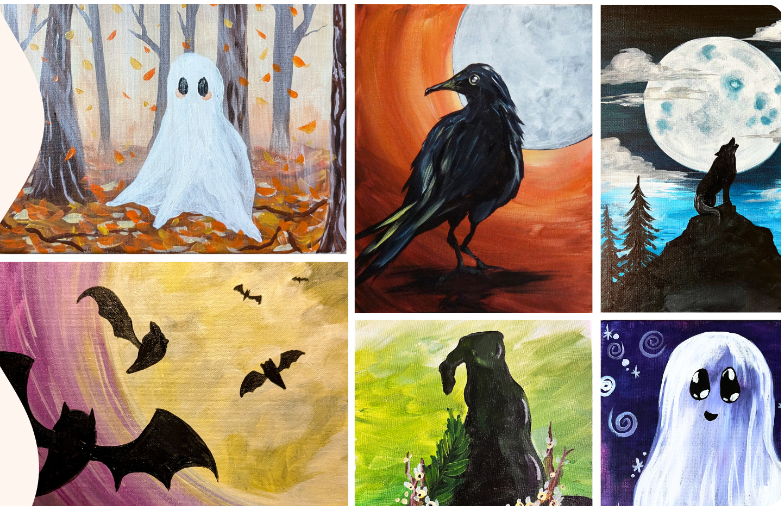Acrylic Painting for Beginners Step by Step: No Experience Needed
Starting something new can feel a little scary—especially when it’s something creative, like painting. Many beginners stand in front of a blank canvas thinking, “What if I mess this up?” But here’s the beautiful truth: when it comes to acrylic painting, there is no wrong stroke, no wrong color, and no right way to “be” an artist. Everyone starts somewhere, and every artist was once a beginner just like you.
This guide, Acrylic Painting for Beginners Step by Step: No Experience Needed, is designed to help you take that first step with confidence. Whether you’ve never touched a brush or you’ve tried once and felt overwhelmed, this friendly, simple approach will help you paint with ease and actually enjoy the process.
At Artvana | Acrylic Paint & Sip Events, we’ve helped thousands of first-time painters discover their creativity—even people who swore they “can’t draw a stick figure.” With the right steps and a relaxed mindset, acrylic painting becomes one of the most enjoyable hobbies you’ll ever try.
So take a breath, grab your brushes, and let’s begin your creative journey—step by step.
Why Acrylic Painting Is Perfect for Beginners
Acrylic paint is one of the easiest mediums for new artists. It dries quickly, blends beautifully, and cleans up with just water. It’s forgiving, easy to layer, and not nearly as intimidating as oils or watercolor.
Here’s why beginners love working with acrylics:
-
They dry fast, so you can add layers without waiting hours.
-
You can paint over mistakes—just let it dry and redo it!
-
They’re affordable, making them great for practice.
-
They work on many surfaces: canvas, paper, wood, cardboard, and more.
-
The colors stay vibrant, giving every painting a professional feel.
With acrylics, you don’t need perfect technique. You just need curiosity—and maybe your favorite snack or drink to sip along the way.
Step 1: Gather the Basic Supplies
You don’t need fancy materials to begin. Start with simple, budget-friendly items:
-
A canvas or acrylic paper
-
A basic set of acrylic paints
-
A few brushes (flat, round, detail)
-
A cup of water
-
Paper towels or an old cloth
-
A palette or even a paper plate
That’s it! Most beginners think they need a lot of tools, but acrylic painting works beautifully with just the basics.
At Artvana, we always emphasize simplicity. The less you overthink the supplies, the more fun you can have with the painting itself.
Step 2: Start with an Easy Background
Before you paint anything detailed, warm up by creating a background. Backgrounds instantly make your canvas feel less intimidating.
Try one of these super easy beginner techniques:
• Soft Color Gradient
Choose two colors (like blue and white).
Blend them gently as you move across the canvas.
• Simple Two-Tone Background
Pick a lighter color for the top and a darker color for the bottom.
Blend where they meet.
• One-Color Wash
Paint the entire surface a single shade.
This is perfect for silhouette paintings.
This step sets the mood and gives you a comfortable starting point.
Step 3: Sketch Simple Shapes (Lightly!)
You don’t need to be a drawing expert. Still, a light outline helps guide your painting.
Use a pencil or a thin brush to sketch:
-
A horizon line
-
A circle (sun or moon)
-
Simple mountains
-
A tree shape
-
A flower outline
Think “simple shapes,” not details. Many amazing acrylic paintings are built from circles, triangles, and loose outlines.
Step 4: Block In the Main Colors
This is where your painting begins to take form. Fill in the large areas first, using flat brushes and simple strokes.
For example:
-
If you’re painting a flower, fill the petals with one solid color.
-
If you’re doing a landscape, block in the land, sky, mountains, or water.
-
If you’re painting a silhouette, fill the shape with black.
Blocking in colors is calming and helps build confidence early in the process.
Step 5: Add Layers for Depth
Acrylics shine because of layering. When one layer dries, apply another to create depth, shadows, or highlights.
Try these easy layering ideas:
-
Add white to create highlights.
-
Add dark shades for shadows.
-
Add soft strokes to build texture.
-
Add lighter colors on top of darker ones once dry.
Even simple layers instantly make your painting look more professional—even if you’re a total beginner.
Step 6: Add Details Slowly
Details are the final touches that bring everything together. But remember: details don’t mean perfection.
Add small strokes, thin outlines, sparkles, dots, leaves, highlights—anything that enhances your image. A few careful lines can transform your painting from flat to expressive.
This is often the step where beginners smile and say, “Wow… I actually made that!”
Step 7: Step Back and Celebrate Your Work
Once your painting is done, step back, look at it from afar, and appreciate what you’ve created. Even the smallest painting represents time, effort, creativity, and courage.
Your first paintings won’t look perfect—and they don’t need to. What matters is the joy of creating something with your own hands.
Bonus Tips for Success
-
Don’t aim for perfection—aim for joy.
-
Keep your brush strokes light and relaxed.
-
Work in layers instead of rushing.
-
If something feels wrong, paint over it!
-
Practice blending slowly.
-
Experiment without fear of “messing up.”
With every canvas, your confidence grows.
Why Artvana Is the Perfect Place for Beginners
At Artvana | Acrylic Paint & Sip Events, we specialize in teaching acrylic painting for beginners step by step. Our classes are gentle, fun, and welcoming—making them ideal for anyone who wants to try art without pressure. You don’t need experience, artistic skill, or even a steady hand. Just show up, sip something you enjoy, and let our instructors guide you through every brushstroke.
Whether you join a public paint-and-sip night or book a private party, you’ll always walk away with a painting you’re proud of—and a memory you’ll want to repeat.
Final Thoughts
Learning acrylic painting doesn’t require talent or years of practice. It simply requires you to begin. With a few basic techniques, a relaxed mindset, and a supportive environment like Artvana, anyone can create beautiful art.
Your journey starts with one canvas, one brushstroke, and the willingness to try. Remember: no experience is needed—you just need to take the first step.







